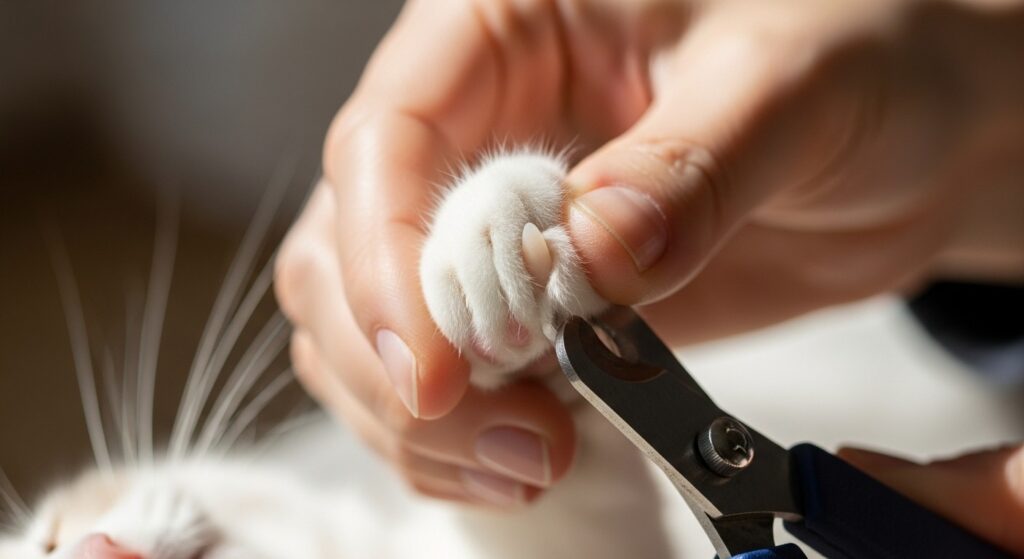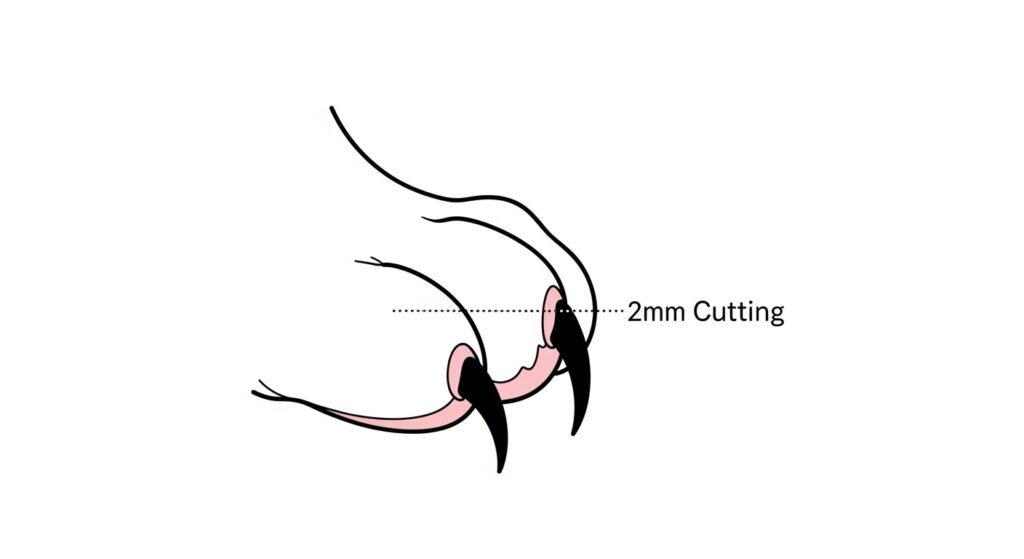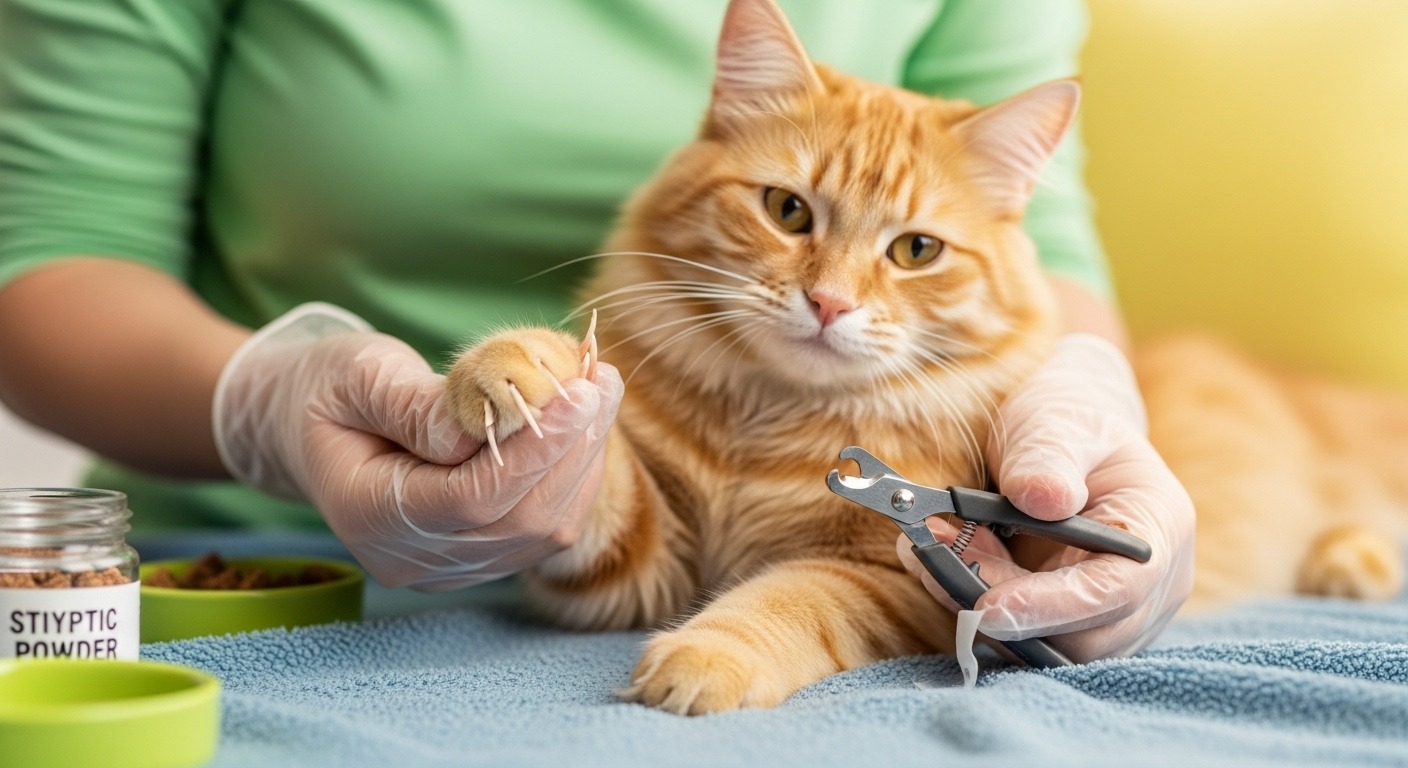Trimming your cat’s nails keeps them healthy and your home scratch-free. Overgrown nails can curl back into the paw pads. This causes pain and infection. Regular trims prevent that. It also stops your cat from snagging on fabrics or carpets. Indoor cats need this more than outdoor ones. They don’t wear down their nails naturally. Follow these steps to do it right. Always stay calm. Your cat will pick up on your mood.
Why Trim Your Cat’s Nails?
Cats use their nails to climb and scratch. But sharp tips can hurt people or damage furniture. Long nails lead to splits or breaks. These increase infection risk. Trimming reduces that. It helps older cats too. Their nails grow faster with age. Shorter nails make walking easier for them.
- Keeps paws healthy and free from ingrown nails.
- Lowers chance of scratches on skin or upholstery.
- Stops nails from catching on rugs, leading to pulls or tears.
- Promotes better mobility, especially in senior cats.
If your cat scratches too much, check our guide on why do cats knead. It might tie into nail habits.
How Often Should You Trim Cat Nails?
Check your cat’s nails every two weeks. Trim them every 2 to 4 weeks. This depends on how fast they grow. Active cats that scratch posts may need less. Look for a hook at the nail tip. That’s a sign it’s time. Kittens grow nails quicker. Start early to get them used to it. By 2025 standards, vets still recommend this schedule. No big changes in cat care basics.
Front paws often need more trims than back ones. They do most of the scratching. If your cat is a breed like Maine Coon, watch for faster growth. See our Maine Coon size guide for more on big breeds.
What Tools Do You Need to Trim Cat Nails?
Gather the right items first. This makes the job smooth. Use cat-specific tools. Human ones can split nails.
- Cat nail clippers: Guillotine or scissor style works best. Avoid regular ones.
- Styptic powder: Stops bleeding if you nick the quick.
- Treats: For rewards after each paw.
- Towel: To wrap fidgety cats.
- Nail file: Smooths rough edges after cutting.
Get clippers from a pet store. They cost little and last years. For dark nails, a grinder helps. It files down slowly without cuts.

Step-by-Step Guide to Trimming Cat Nails
Do this in a quiet room. Sit on the floor or couch. Have help if your cat is wiggly. Go slow. Stop if your cat gets upset.
Prepare Your Cat
Get your cat comfy first. Pet them to relax. Touch their paws gently. Press the pads to extend nails. Do this daily for a week before trimming. It builds trust. Offer a treat each time. This turns it into play.
Link to our pet name generator if you want fun names for treat time.
Hold the Paw Correctly
Hold your cat with one arm across their chest. Face the same way. Use your other hand for the paw. Or wrap in a towel like a burrito. Leave one paw out at a time. Press the top of the paw with thumb and forefinger. The nail pops out.
Cut the Nail Safely
Look at the nail. See the pink quick inside? That’s the part with blood. Cut just before it. About 2 millimeters from the tip. Angle the clippers at 45 degrees. Snip straight across. For dark nails, cut small bits. Check after each one.
Do one paw at a time. Then switch. File the edge if it’s sharp.

Reward and Repeat
Give a treat right after each paw. Praise your cat. Let them go if they fuss. Finish the rest later. Trim all 18 nails over a few days if needed. Back paws last. They are shorter.
How to Spot and Avoid the Quick When Trimming Cat Nails
The quick is the pink area in the nail. It has nerves and blood. Cutting it hurts like a paper cut on you. In light nails, it’s easy to see. In dark ones, guess by the curve. Stop there.
Shine a light through the nail. Or trim less and check often. If the nail is very long, take tiny cuts over time.

For more on cat health signs, use our pet symptom checker.
What Happens If You Cut the Quick?
It might bleed a bit. Your cat will yowl. Stay calm. Press styptic powder on the tip. Or use flour or soap. Hold for a minute. It stops fast. Watch for infection. Redness or swelling means see a vet.
Most times, it’s no big deal. Just a small owie. Next time, cut less.
Tips for Trimming Nails on a Cat That Fights Back
Some cats hate this. Start young if you can. For adults, try these.
- Wrap in a towel. Pull one leg out.
- Trim while they sleep or eat.
- Use two people. One holds, one cuts.
- Distract with a toy or laser.
- Go to a groomer if it’s too hard.
Read our how to give a cat a pill for more handling tips. Similar tricks apply.
If nails cause pain, link to why is my cat limping via the checker tool.
When to Get Professional Help for Cat Nails
Trim at home most times. But see a vet if nails are overgrown and curled. Or if your cat limps. Infections need antibiotics. Pros can trim tough cases. Cost is low, around $10-20.
For breed info, try our pet breed finder quiz.
Trimming nails is part of good cat care. Do it right, and both you and your cat stay happy. Check back often. Your cat thanks you.
For more cat safety, visit ASPCA cat grooming tips. Or VCA on cat nails.
